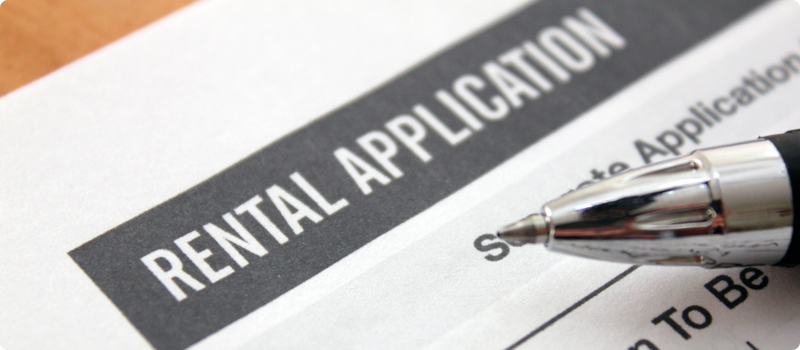Basic landlord forms you need
Updated June 19, 2024 . AmFam Team
Landlords, like most business owners, rely on forms and contracts with their tenants to define key terms in various legal agreements. From the standard rental application to lesser-known items like sale of property notifications, you may need one of these important documents one day.
We’ve put together a list of the basic (and not-so-basic) forms that you’ll need. Take a look at this essential list of landlord forms and learn why these documents are so important to your business and its financial well-being.
Getting the tenant forms you need online saves time
From building your lease in the cloud to creating legally binding documents that your tenants can sign and execute online, it’s never been easier to keep your paperwork organized. Groups like TransUnion’s Smart Move (Opens in a new tab) and TenantCloud make the application process easy.
By vetting the prospective tenant’s credit history and background and digging into the details of previous tenancies, you’ll get all the data you need to select the best candidate for your rental. All of this will be done while your tenant’s personally identifiable information stays safe.

The advantages of automating landlord forms
Part of staying efficient as a property manager is knowing how to delegate and get work done efficiently. With the advent of rental management software and the availability of online forms for landlords, it’s never been easier to customize and build documents for your rental business.
Check out groups like EZ Landlord Forms and RocketLawyer for their vast array of landlord-friendly forms, available for a nominal annual or monthly fee. They offer state-specific form templates that can be customized and tweaked to match outside legal advice for your rental property.
EZ Landlord Forms will further assist you by offering tips as you fill in the lease online. For instance, you’ll be prompted on state-specific limits for security deposit amounts and other key details.
Better still, once you make a form that works for you, you can save it and use it for other tenants without having to rebuild it. Some even offer the ability for tenants and landlords to e-sign, keeping the entire landlord-tenant process electronic. Even managing the eviction process with tenants can be handled online.
After you’ve crafted a document you feel comfortable with, be sure to have your real estate law firm check it out. You’ll save yourself expensive billable hours in attorney fees by using these online templates to get the majority of the work done for you.
What are the basic landlord forms you need to process an application?
When you think of landlord forms, you really should be thinking about essential legal property management documents. As a landlord, you’re managing your property. With so many jobs to perform and roles to fill, documents and checklists can help you keep your business running smoothly. Again, be sure to filter for state-specific forms and have your attorney sign off on them before you deliver any to your tenants.

Basic rental forms
Forms on your tax return aren’t the only ones you need to use as a landlord; certain basic forms are common for all landlords to use at some time or another. Creating your own library of forms gives you instant access to what you need when you need it. And as an added bonus, it encourages you to get everything in writing. Here are some rental application forms every landlord should have on hand:
- Rental application
- Rental application approval
- Tenant welcome letter
- Rental application denial
- Tenant screening checklist
- Tenant screening authorization for credit and background check
- Tenant personal financial statement
Rental agreements and lease agreement forms
All prospective tenants should complete a rental application so you have the information you need to run a background check. After they’re cleared for rental, you’ll need to produce important tenant-landlord forms. If you would like to customize your form online, always save a backup locally.
These are possibly the most important forms you’ll use. Take care to build the lease according to your business needs, and change the template forms so that your interests are protected.
- Tenant welcome letter
- Residential lease agreement
- Month-to-month rental agreement
- Sublease agreement
- Lease renewal or notice to vacate
- Non-renewal notice
- Move-in move-out condition report
- Move-out to-do list
- Garage and storage agreement
- Direct deposit billing authorization
- Rental renewal
- Lease addendum template
- Pet addendum
- Co-signer agreement
- Military clause agreement
- Pool/hot tub use agreement
- Security alarm system installation policy

Rental agreement addenda forms and tenant instructions
With an array of miscellaneous forms at your disposal, you’ll be able to round-out your agreements and attend to your tenant’s individual concerns. Here is a list of key addendum and tenant instruction forms you may need:
- Pest control/bed bug addendum
- Roommate lease addendum
- Furnished rental unit addendum
- Mold prevention addendum
- Live-in caregiver addendum
- Rental payments bank deposit instructions
- Tenant receipt of keys
- Tenant guest policy agreement
- Fireplace/wood stove pellet-burning appliance addendum
- Commercial sign addendum
- Smoke-free policy agreement addendum
- Permitted alterations and improvements agreement
Various tenant notifications and disclosure documents
Each state requires you to disclose certain details and facts about your rental unit. From lead-based paint to details on asbestos in your commercial real estate, the tenant has a right to be informed. Here are a list of various notification and disclosure documents you’ll need to have handy:
- Lead-based paint disclosure and certification
- Security deposit receipt and disclosure
- Asbestos disclosure
- Tenant’s waiver of insurance
- Fire safety device disclosure
- Refuse and recycling instructions
- Fire prevention and emergency action plan instructions
- Region-specific safety documents on earthquakes, wildfires, tornados, hurricanes and floods
- Move-out cleaning guide and checklist

Common notification and receipt forms
When the time comes to make adjustments to your lease or increase the rent, you’re going to need to provide written notice. Here’s a list of common notification forms and receipt forms you’ll need to manage your rental property:
- Rent increase notice
- Notice to enter
- Sale of property notice
- Change of ownership/management
- Notice to tenant to repair damages
- Notice to show property
- Returned rent payment notice
- Tenant repairs for reduced rent agreement
- Abandoned property notice
- Rent payment reminder notice
- Rent receipt
- Rent ledger
- Maintenance record
- Appliance inventory and service log
Lease violation notifications and fine statements
If your tenant’s actions threaten the financial or physical well-being of your rental business, you’ll need to send them lease violation notifications. Additionally, fine statements to document and remedy the issue stating the terms and conditions in question are key:
- Unauthorized occupant violation
- Maintenance/cleanliness violation
- Unauthorized pet lease violation
- Excessive noise violation
- Smoking violation
- Landscaping/snow removal violation
- Open windows in inclement weather violation
- Demand for rent payment notice
- Late fee/fine due notice
- Notice to report late rent payments to credit bureaus
- Past-due payment arrangement agreement
- Cosigner notice of overdue balance
- Late utility payment demand for payment
- Eviction notice
- Service notice
- 5-day notice to vacate
- 5-day notice to pay rent or vacate
- 5-day notice to cure or vacate
- 30-day notice to cure or vacate
- 28-day notice to terminate tenancy
- Eviction record and timeline

Rental inspection and post-move-out accounting documents
Keeping tabs on how your tenant is treating the rental is important. Documenting the condition they’re leaving it in is key to settling affairs once they’ve left. Here are several documents you’ll need in your files to manage periodic rental inspections and post-move-out accounting:
- Periodic inspection of rental units
- Security deposit accounting statement
- Balance owed after move-out notice
- Mutual termination of lease tenancy
- Landlord-authored tenant reference letter
- Contractor/vendor agreement
Because your business depends on enforceable contracts, you need to be sure you’re doing all you can to protect your investments every step of the way. These forms offer that key protection. Another important measure you can take is to insure your rental property carefully. Contact your American Family Insurance agent and review your insurance needs today. When your real estate investments are well-covered, you’ll find greater confidence and peace of mind to pursue your dreams.
This article is for informational purposes only and based on information that is widely available. This information does not, and is not intended to, constitute legal or financial advice. You should contact a professional for advice specific to your situation.

